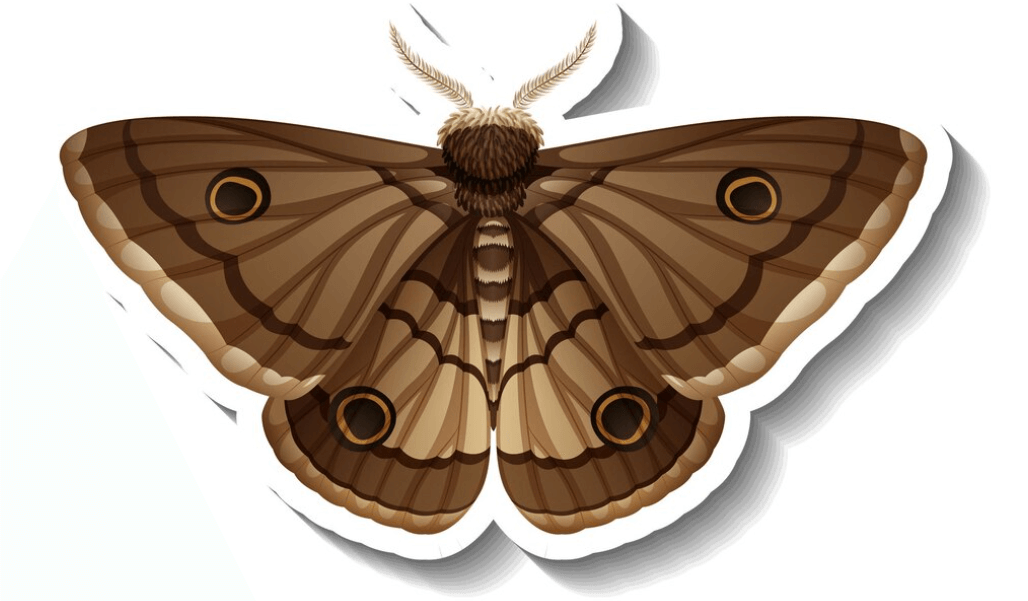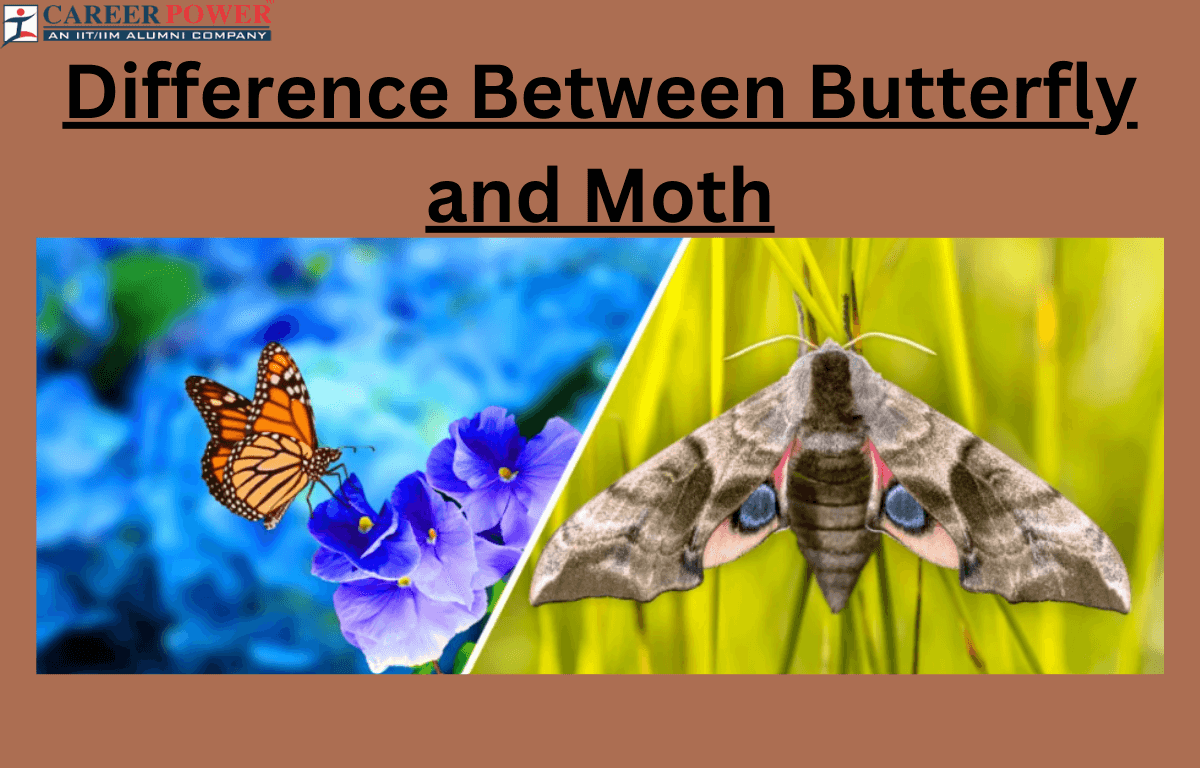Both moths and butterflies have large, often colorful wings covered with scales, which give them their characteristic appearance. They undergo a process called metamorphosis, transitioning from egg to larva (caterpillar) to pupa (chrysalis or cocoon) and finally to adult. Overall, moths, and butterflies are fascinating insects with diverse species found all around the world. Here we have mentioned many other details related to moths and butterflies below in the article.
Moth and Butterfly
Moths and Butterflies are both insects belonging to insects belonging to the order Lepidoptera. They share many similarities but also have some differences. The main difference between them is their activity patterns. Moths are typically nocturnal, meaning they are active during the night, while butterflies are diurnal, being active during the day. Additionally, moths tend to have thicker bodies and feathery or filament-like antennae, whereas butterflies usually have thinner bodies and club-shaped antennae.
What is a Moth?
Moths are insects that belong to the same group as butterflies, known as Lepidoptera. They come in various shapes, sizes, and colors, but most of them are active during the night. Moths have bodies covered in tiny scales, and they use their wings to fly. One distinctive feature of moths is their feathery or thread-like antennae, which help them detect pheromones released by potential mates. Moths undergo a life cycle called metamorphosis, starting as eggs laid by adult moths. These eggs hatch into caterpillars, which then transform into pupae before emerging as adult moths.

Moths play essential roles in ecosystems as pollinators for certain plants and as food sources for various animals. Some moths are also known for their ability to blend into their surroundings, making them well-camouflaged from predators. Overall, moths are fascinating insects with diverse characteristics and important ecological functions.
What is a Butterfly?
Butterflies are beautiful insects that belong to the same family as moths, known as Lepidoptera. They are admired for their colorful wings and graceful flight. Butterflies have four distinct life stages: egg, caterpillar (larva), pupa (chrysalis), and adult. The journey starts when a female butterfly lays tiny eggs on host plants. From these eggs hatch caterpillars, which are voracious eaters, consuming leaves and growing rapidly. After a period of feeding, the caterpillar forms a chrysalis, where it undergoes a miraculous transformation called metamorphosis. Inside the chrysalis, the caterpillar undergoes significant changes and eventually emerges as a fully developed butterfly.

Adult Butterflies have delicate, scaled wings that come in a variety of vibrant colors and patterns. They use their proboscis, a long, coiled tube, to sip nectar from flowers. Butterflies are essential pollinators, helping plants reproduce by transferring pollen from one flower to another. They are also admired for their role in gardens and ecosystems, bringing beauty and life to the natural world. Butterflies are symbols of transformation and are loved by people of all ages for their enchanting presence.
Difference Between Moth and Butterfly
Here we have discussed a few differences between Moths and Butterflies. These differences help distinguish between the two insect groups, although there are exceptions and variations within both butterflies and moths.
| Difference Between Moths and Butterflies | ||
| Features | Butterflies | Moths |
| Antennae Shape | The shape of the antenna of a butterfly is slender, and long with clubbed tips. | The shape of the antenna of the moth is feathery or comb-like. |
| Wings | The wings of the butterfly are colorful, vibrant, and have intricate patterns. | The wings of the moths are of dull colors and have a cryptic pattern. |
| Activity Patterns | The butterflies are diurnal (active during the day). | The moths are Nocturnal (active at night). |
| Resting Position | The resting position of the butterfly is wings folded vertically upward. | The resting position of the moths is wings flattened against the resting surface. |
| Cocoon/Chrysalis | The butterflies form a Chrysalis (hard protective case) | The moths form a Cocoon (spun silk protection for the pupal stage). |
| Pupa Stage | In butterflies, the pupal stage is for a shorter duration. | In moths, the pupal stage is for a longer duration. |
| Body Shape | The body shape of the butterflies is slim and slender. | The body shape of the moths can vary, may have stout or furry bodies. |
| Eyes | The butterflies have large and compound eyes. | The moths have large or small eyes, depending on the species. |
| Flight Characteristics | The flight characteristics of a butterfly are graceful and steady. | The flight characteristics of moths are fluttery or erratic flight patterns. |
| Habitats | The butterflies have an open habitat like gardens and meadows. | The moths have various habitats including forests, fields, and urban areas. |
Similarities Between a Moth and a Butterfly
Butterflies and Moths are both insects belonging to the order Lepidoptera. They share several similarities, such as life cycle, wings, and many more. Despite these similarities, moths, and butterflies also have differences in aspects such as their appearance, behavior, and habitat preferences, which have been mentioned above.
- Life cycle: Both moths and butterflies undergo a complete metamorphosis, consisting of four stages: egg, larva (caterpillar), pupa (chrysalis or cocoon), and adult.
- Wings: They both have large, often colorful wings covered in scales. The scales give them their characteristic patterns and colors.
- Antennae: Moths and butterflies have antennae on their heads, although the shape and size of antennae can vary between species.
- Proboscis: Both insects have a long, coiled tube-like structure called a proboscis, which they use to feed on nectar from flowers.
- Nocturnal and Diurnal: While many moths are nocturnal (active at night) and butterflies are diurnal (active during the day), there are exceptions, and some moths are active during the day, too.
- Pupal Stage: During their pupal stage, both moths and butterflies undergo a significant transformation inside a protective casing (chrysalis or cocoon) before emerging as adults.



 50 Vegetables Name for Kids in English a...
50 Vegetables Name for Kids in English a...
 Food Chain: Definition, Types, Examples,...
Food Chain: Definition, Types, Examples,...
 Human Respiratory System: Definition, Di...
Human Respiratory System: Definition, Di...













